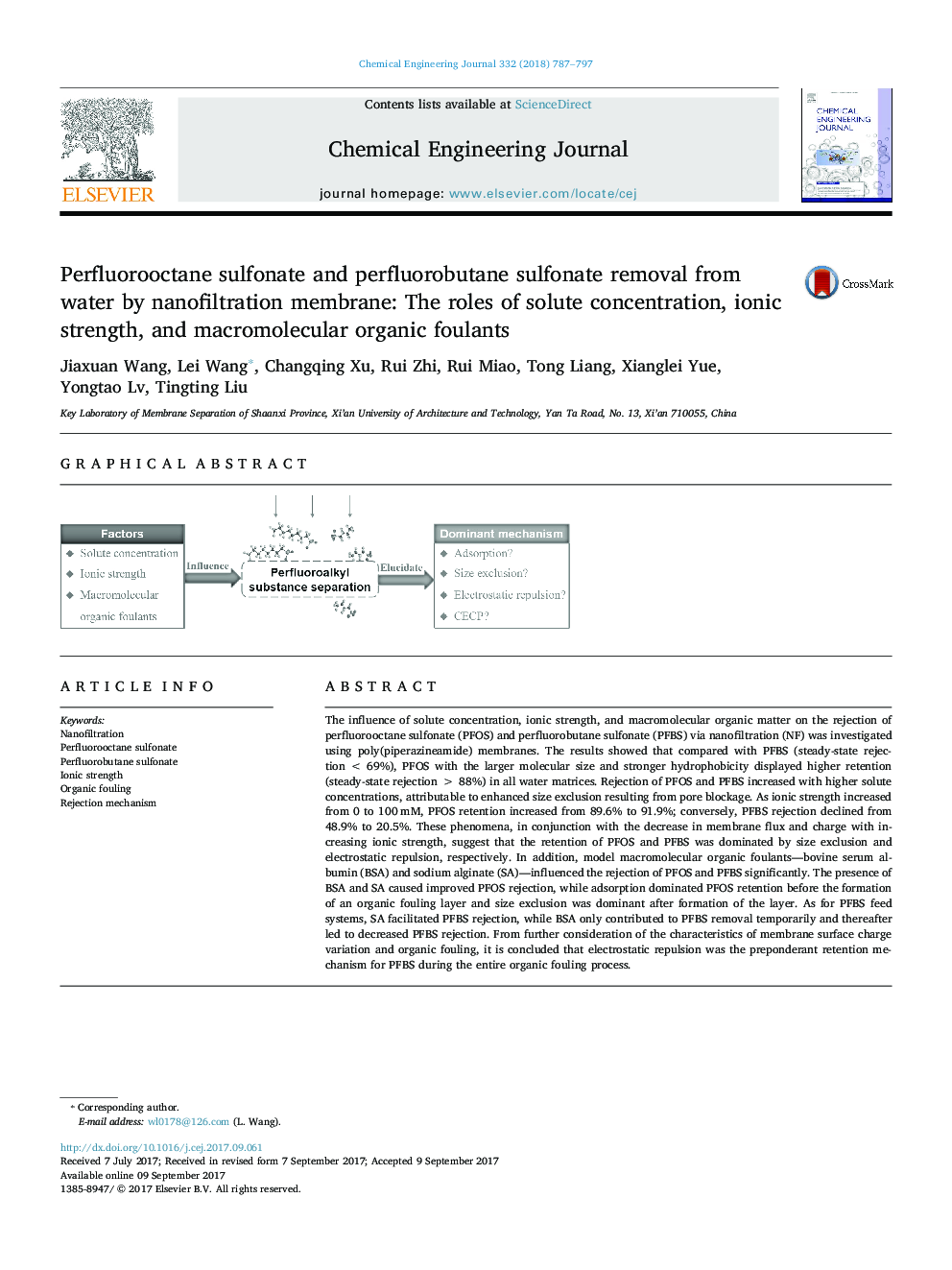| کد مقاله | کد نشریه | سال انتشار | مقاله انگلیسی | نسخه تمام متن |
|---|---|---|---|---|
| 6464949 | 1422946 | 2018 | 11 صفحه PDF | دانلود رایگان |

- PFOS exhibited higher rejection than PFBS from all the water matrices evaluated.
- Rejection of PFOS and PFBS increased at higher solute concentrations.
- Increasing ionic strength enhanced PFOS retention but decreased PFBS rejection.
- BSA and SA improved PFOS rejection but they had opposite effects on PFBS retention.
- The dominant rejection mechanisms of PFOS and PFBS were different in most cases.
The influence of solute concentration, ionic strength, and macromolecular organic matter on the rejection of perfluorooctane sulfonate (PFOS) and perfluorobutane sulfonate (PFBS) via nanofiltration (NF) was investigated using poly(piperazineamide) membranes. The results showed that compared with PFBS (steady-state rejection < 69%), PFOS with the larger molecular size and stronger hydrophobicity displayed higher retention (steady-state rejection > 88%) in all water matrices. Rejection of PFOS and PFBS increased with higher solute concentrations, attributable to enhanced size exclusion resulting from pore blockage. As ionic strength increased from 0 to 100 mM, PFOS retention increased from 89.6% to 91.9%; conversely, PFBS rejection declined from 48.9% to 20.5%. These phenomena, in conjunction with the decrease in membrane flux and charge with increasing ionic strength, suggest that the retention of PFOS and PFBS was dominated by size exclusion and electrostatic repulsion, respectively. In addition, model macromolecular organic foulants-bovine serum albumin (BSA) and sodium alginate (SA)-influenced the rejection of PFOS and PFBS significantly. The presence of BSA and SA caused improved PFOS rejection, while adsorption dominated PFOS retention before the formation of an organic fouling layer and size exclusion was dominant after formation of the layer. As for PFBS feed systems, SA facilitated PFBS rejection, while BSA only contributed to PFBS removal temporarily and thereafter led to decreased PFBS rejection. From further consideration of the characteristics of membrane surface charge variation and organic fouling, it is concluded that electrostatic repulsion was the preponderant retention mechanism for PFBS during the entire organic fouling process.
51
Journal: Chemical Engineering Journal - Volume 332, 15 January 2018, Pages 787-797